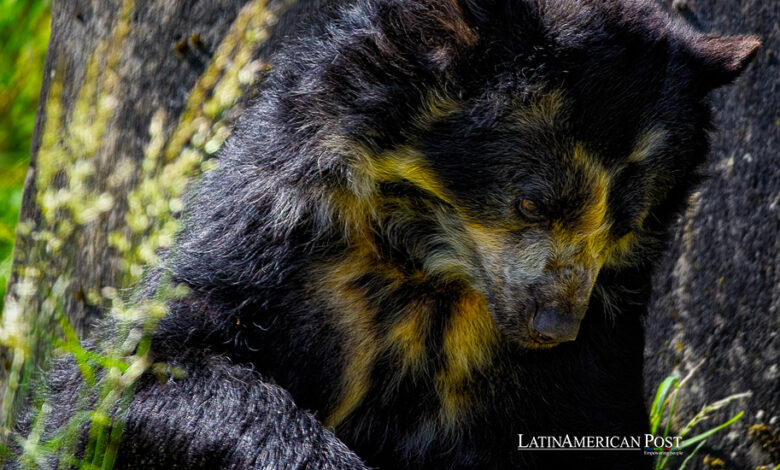Colombian Andean Bear’s Rare Canine Distemper Virus Infection

A recent study reveals the first confirmed case of a Colombian Andean Bear infected with canine distemper virus, highlighting the need for increased wildlife disease research and management in South America.
Unveiling a Wildlife Breakthrough
In a groundbreaking discovery, researchers from Colombia and Ecuador have confirmed the first case of a Colombian Andean Bear (Tremarctos ornatus) infected with the canine distemper virus (CDV). The study, recently published and involving the National Institute of Biodiversity (Inabio) of Ecuador, the Regional Autonomous Corporation of Guavio (Corpoguavio), and the Andean Bear Foundation, marks a significant development in wildlife disease research.
The bear, captured in 2018 in Colombia’s Cundinamarca department after attacking a pig, was in poor health, exhibiting a thin body condition (70 kg), dull fur, and extensive dental wear, indicating old age. The diagnosis was confirmed through a PCR test conducted in 2021.
Unraveling the Mystery of Transmission
Researchers are uncertain whether the bear contracted the virus while under human care or if it was an asymptomatic carrier in the wild. Notably, the bear appeared normal during the infection, and the virus was undetectable three months later.
This case is rare in bears, although previous studies have detected CDV in Ecuador’s Andean fox (Lycalopex culpaeus). The research team, led by Armando X. Castellanos, María Medina, and Deissy Beltrán, emphasized investigating infectious diseases’ prevalence, risk, and impact in South American wildlife sharing habitats with bears.
Wildlife Under Threat
Although well-documented in domestic dogs, infectious diseases like CDV pose a significant threat to wildlife. In Asian Black Bears (Ursus thibetanus) in captivity, CDV infection primarily presented as diarrhea. In Giant Pandas (Ailuropoda melanoleuca), the infection was associated with symptoms like teeth chattering, leg convulsions, mucopurulent ocular discharge, and nasal hyperkeratosis.
The researchers’ findings underscore the importance of incorporating serological analysis into routine wildlife health assessments. Despite extensive vaccination campaigns, CDV has not been eradicated and continues to affect a broad range of hosts. This case in the Andean Bear exemplifies the virus’s capacity to cross species barriers, posing a threat to wildlife conservation efforts.
Colombia’s rich biodiversity, including iconic species like the Andean Bear, is integral to the country’s ecological heritage. However, the increasing interaction between wild and domestic animals, partly due to habitat encroachment and human activity, elevates the risk of disease transmission. This case serves as a call to action for wildlife health monitoring and management strategies in Colombia and the broader South American region.
The Vulnerable Andean Bear
The Andean Bear’s situation is particularly poignant, considering its status as a vulnerable species due to habitat loss, human-wildlife conflict, and emerging health threats. This incident highlights the interconnectedness of ecosystem health, where human activities and wildlife conservation intersect.
Also read: Health Authorities Confirm that the ‘JN.1’ Variant of COVID-19 is Circulating in Colombia
The discovery of the CDV infection in the Colombian Andean Bear is a stark reminder of the complex challenges facing wildlife conservation. It underscores the need for comprehensive disease surveillance programs, integrated wildlife management, and heightened awareness of the impacts of human activities on wildlife health. This case adds a crucial chapter to the narrative of Andean wildlife conservation, advocating for a balanced coexistence with nature and proactive measures to protect these irreplaceable species for future generations.




